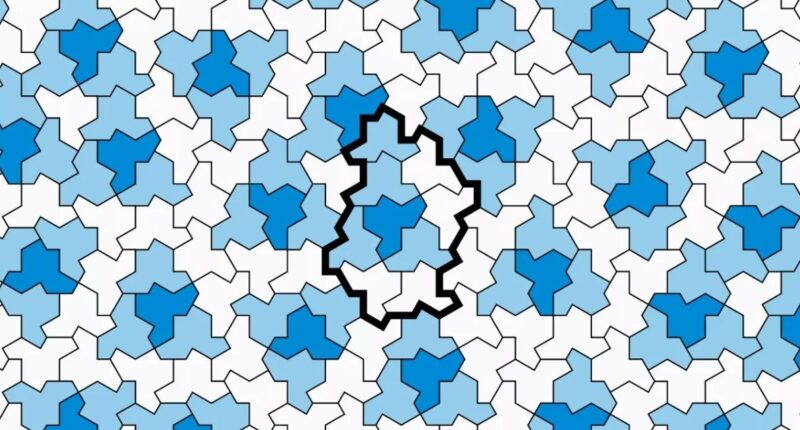MATHEMATICIANS have invented a new 13-sided shape that can be rearranged infinitely without repeating a pattern.
For many decades, mathematicians tried to find a shape that they could retile perfectly, without the pattern repeating.
These rare shapes – known as aperiodic tilings – would be dubbed “einsteins,” which translates to “one stone” in German.
There was no such shape in existence, until David Smith, a retired printing technician from East Yorkshire, England, found one.
Smith and his team – which consisted of two computer scientists, and a mathematician – uncovered a 13-sided shape that is indeed an “einstein.”
The team named the new shape “the hat,” because it slightly resembles a fedora.
To test their theory, they built hierarchical sets of tile patterns that display how the pattern never repeats as the surface area increases.
“We first show that a representative example, the “hat” polykite, can form clusters called “metatiles”, for which substitution rules can be defined,” the team explained.
“Because the metatiles admit tilings of the plane, so too does the hat,” they added. “We then prove that generic members of our continuum of polygons are aperiodic, through a new kind of geometric incommensurability argument.”
“Separately, we give a combinatorial, computer-assisted proof that the hat must form hierarchical – and hence aperiodic – tilings,” they concluded.
Most read in News Tech
The researcher’s findings are currently available on the preprint server arXiv and are awaiting peer review.
Smith told The New York Times he made the rare discovery because he is “always messing about and experimenting with shapes.”
“It’s always nice to get hands-on. It can be quite meditative,” Smith added.
What’s more, mathematicians have known about the shape but they had never considered it a candidate at an “einstein” level.
“In a certain sense, it has been sitting there all this time, waiting for somebody to find it,” Marjorie Senechal, a mathematician at Smith College who was not part of the study, told The Times.
“Everybody is astonished and is delighted, both,” Senechal added. “It wasn’t even clear that such a thing could exist.”










